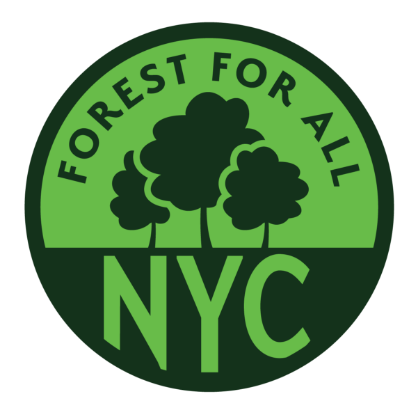by Joseph Ostaoiuk | Staten Island Advance
As advocates work toward their goal of attaining 30% canopy cover across the city by 2035, a new study tackled fundamental questions at the heart of the effort: How much canopy can be spread across the five boroughs, and where should those trees go?
A group of experts confronted those questions by creating a model that analyzed the available space throughout the city where new trees can be planted and existing tree canopy can further expand. It found New York City can sustain tree canopy cover across 40% of its area — higher than the 30% goal established by Forest for All NYC, a coalition of environmental organizations.
The rise would represent a substantial increase from the 22% of canopy cover observed in 2017 and work to combat insidiously rising temperatures scientists say are expected to worsen as a result of climate change.
“Something that kept coming up was, ‘How much canopy can we have?’” said Mike Treglia, the study’s lead author and the head scientist of The Nature Conservancy in New York’s Cities Program, when discussing the motivation for the study. “And there are lots of ways to think about that kind of question.” To start, the team worked on understanding two guiding data points: “Possible canopy” and “practical canopy.”
The former looks at sections of land that could hold canopy (excluding spaces like roads and buildings), explained Treglia. Practical canopy, on the other hand, takes into account that trees can grow over roads and shorter buildings — giving a more accurate representation of where tree cover could grow.
“We wanted to incorporate that tree canopy can grow over short buildings and general roads, but that things like overpasses would be a constraint,” said Treglia.
Green areas show where tree canopy existed as of 2017, but numerous blue areas indicate there is more opportunity — even around areas already with trees — to either allow trees to grow and expand their canopy over time or plant new trees that could benefit the community.
Some of those spaces exist on the borough’s streets. The study found just 3.42% of the Island’s practical canopy could be attributed to street trees, which represents the lowest proportion throughout the five boroughs.
However, the study does not take the time needed to grow trees into account and assumes the planted trees are average size, explained Treglia, a limitation that removes a myriad of factors surrounding a crucial aspect of tree planting: Conservation. Additionally, there are certain spaces in areas throughout the city, like Sheep’s Meadow in Central Park, that could not adequately be captured in the analysis.
And, those involved in the study said there will undoubtedly be examples of practical canopy possibilities that simply do not line up with the reality on the ground.
The study, said Treglia, was meant to serve as a conversation starter on talks surrounding planting and conservation efforts.
“We really see this kind of data set as a tool to start conversations with communities where they’re wanting more tree canopy for different reasons,” said Treglia. “They can think about how that can be implemented.”
While the city’s 17,253 hectares of tree canopy in 2017 could potentially be nearly doubled based on existing opportunities and constraints, the researchers noted that solely relying on areas identified as practical canopy would exacerbate inequities already present in the distribution of the city’s urban forest. One hectare, for reference, is equal to just under 2.5 acres or 10,000 square meters.
Recent research found Staten Island’s North Shore has disproportionately less canopy cover compared to the borough’s affluent South Shore.
Sections of Rossville, for example, may have more space for new canopy cover compared to Mariners Harbor; however, the latter may require more trees to combat the effects of poor air quality and higher heat levels.
“The hottest areas (albeit not always the most heat vulnerable ones) may inherently be some of those with the least practical canopy given the high rates of impervious surfaces,” reads the study.
To address those needs, Treglia said “priority canopy” is a major takeaway from the study — the idea that some areas may need more attention than others due to their existing environmental inventory.
Treglia said pushing toward that equity may require space to be re-imagined in similar ways to how the COVID-19 pandemic prompted fundamental changes in the way the city used its space, like the open streets initiative that transformed streets into public spaces for pedestrians.
Bump-outs from the sidewalk that allow for bigger tree beds, re-zoning areas that allow for more space for tree canopy to overlap buildings and making the most of outside spaces are among the shifts that could enable the five boroughs to receive benefits offered by trees that will work to combat cascading issues sparked by an insidiously warming climate.
“I think it really depends on what folks want from their landscape and how they envision their city,” said Natalia Piland, an interdisciplinary scientist within the Nature Conservancy in New York’s Cities Program, “and I think a lot of it has to do with what different communities need and what they ask for and demand.”
Original article here.
